‘Cera’ 3D Bow Patchwork Bag - 2 in 1 - Shopper and Round (PDF Pattern)
This ROBERTS | WOOD KiT project is provided as a PDF pattern with step-by-step sewing instructions.
The design features 3D bows which are cleverly created when you construct the patchwork of the bag; this minimal but clever construction is an example of our studio’s technique-based approach, hybridising pattern cutting and textile design.
The repetitive, meditative construction of this project makes it ideal for those who are obsessed with making; and find great satisfaction in seeing their projects come together piece by piece.
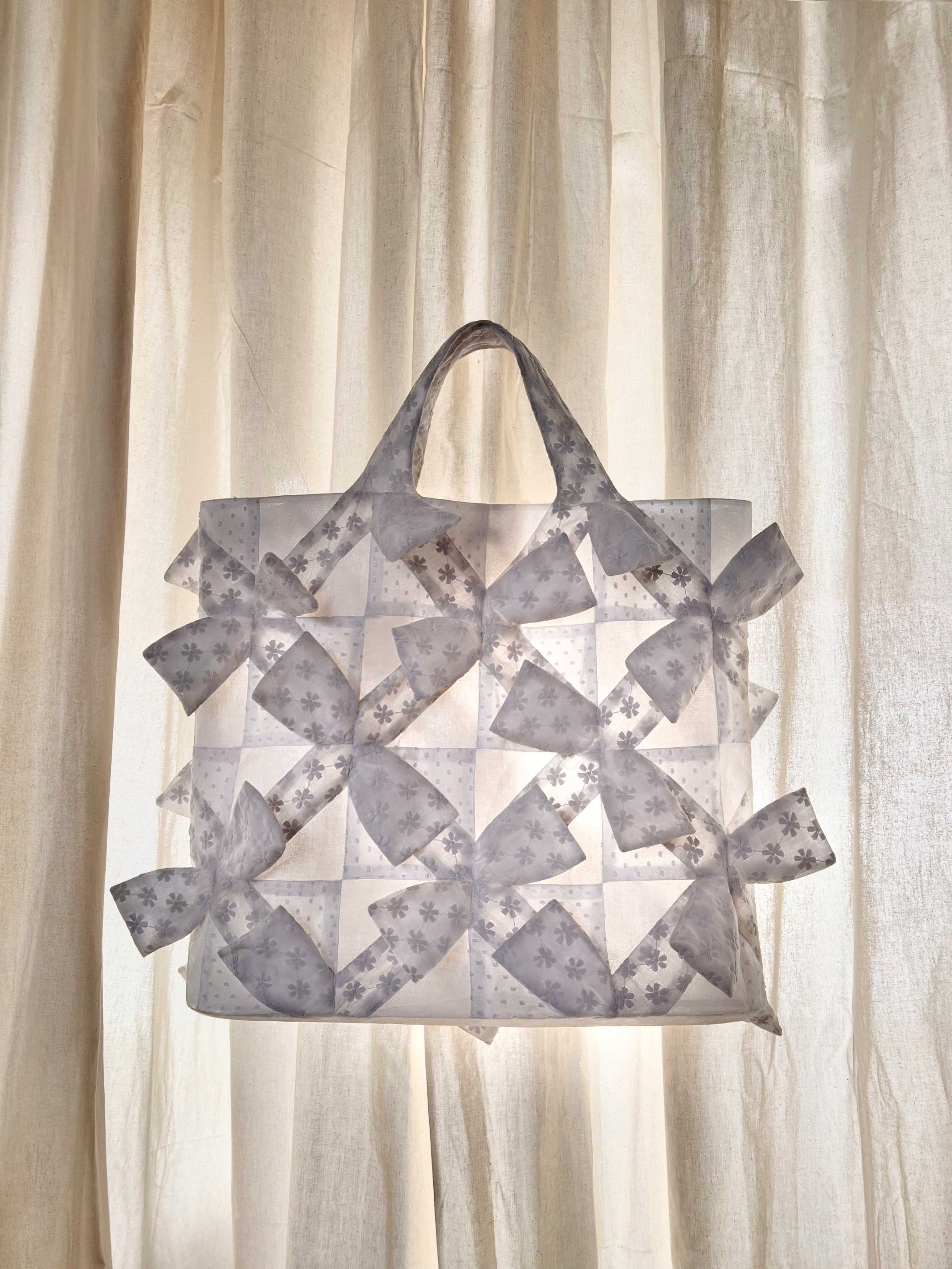


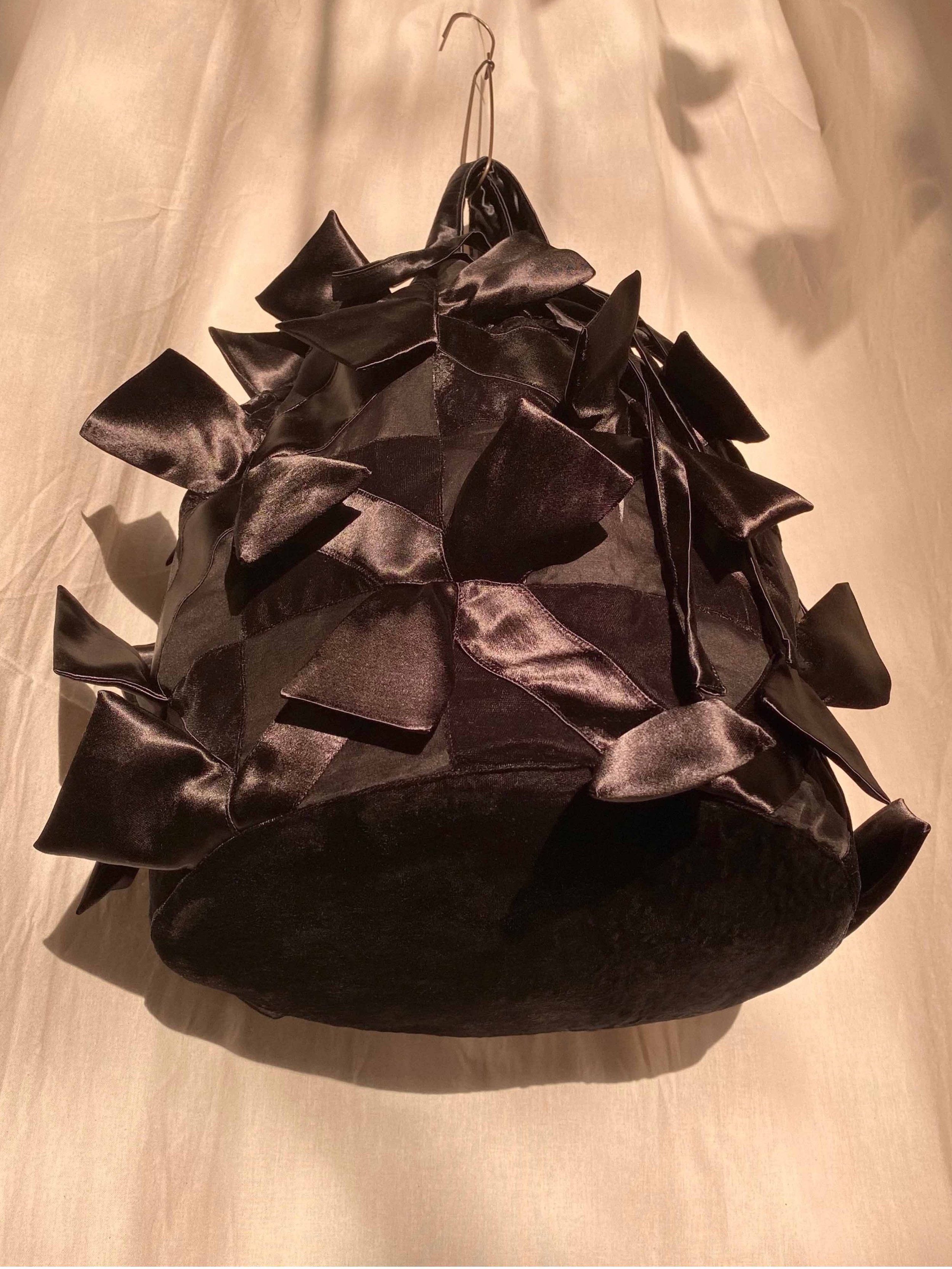
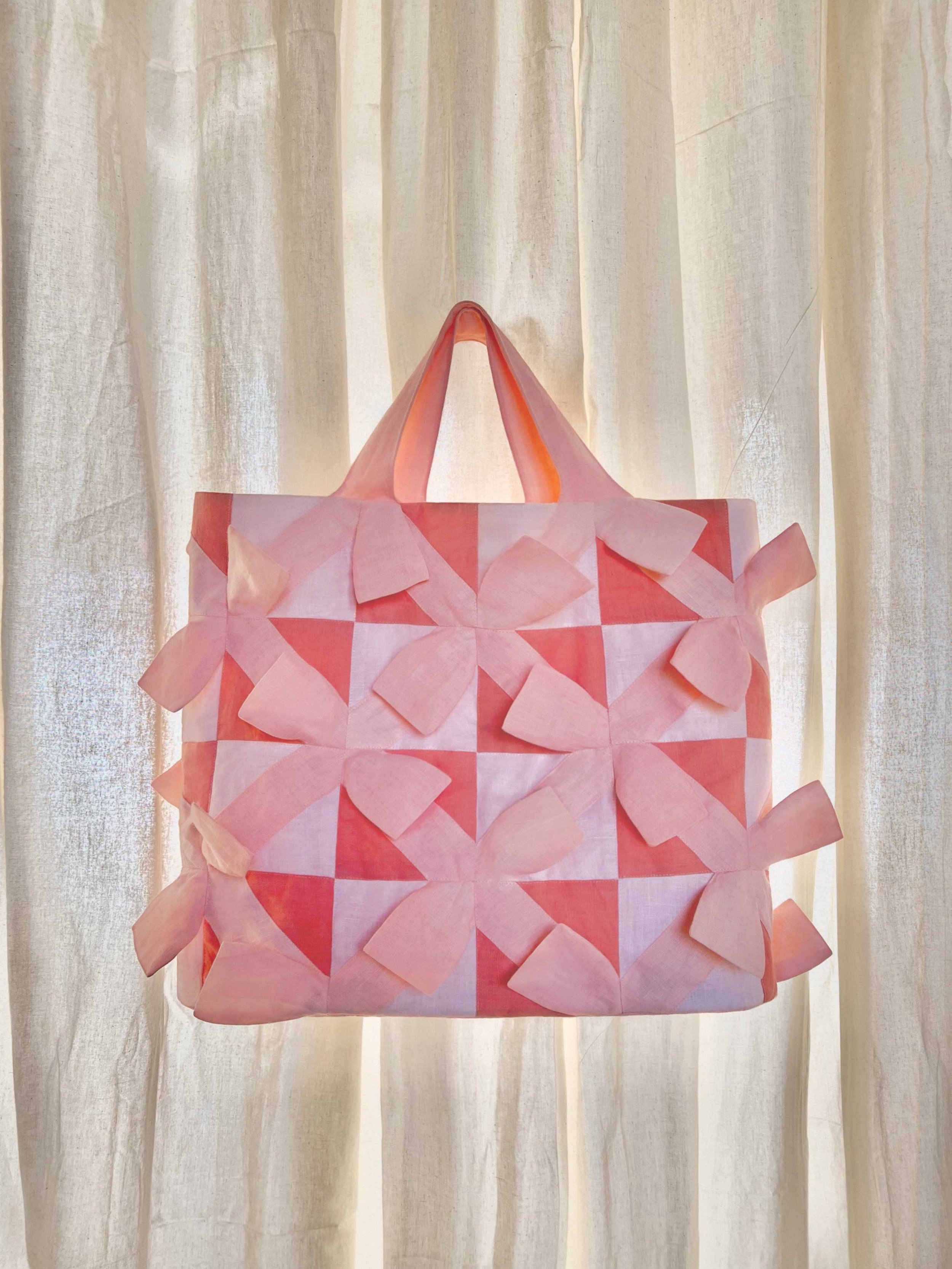
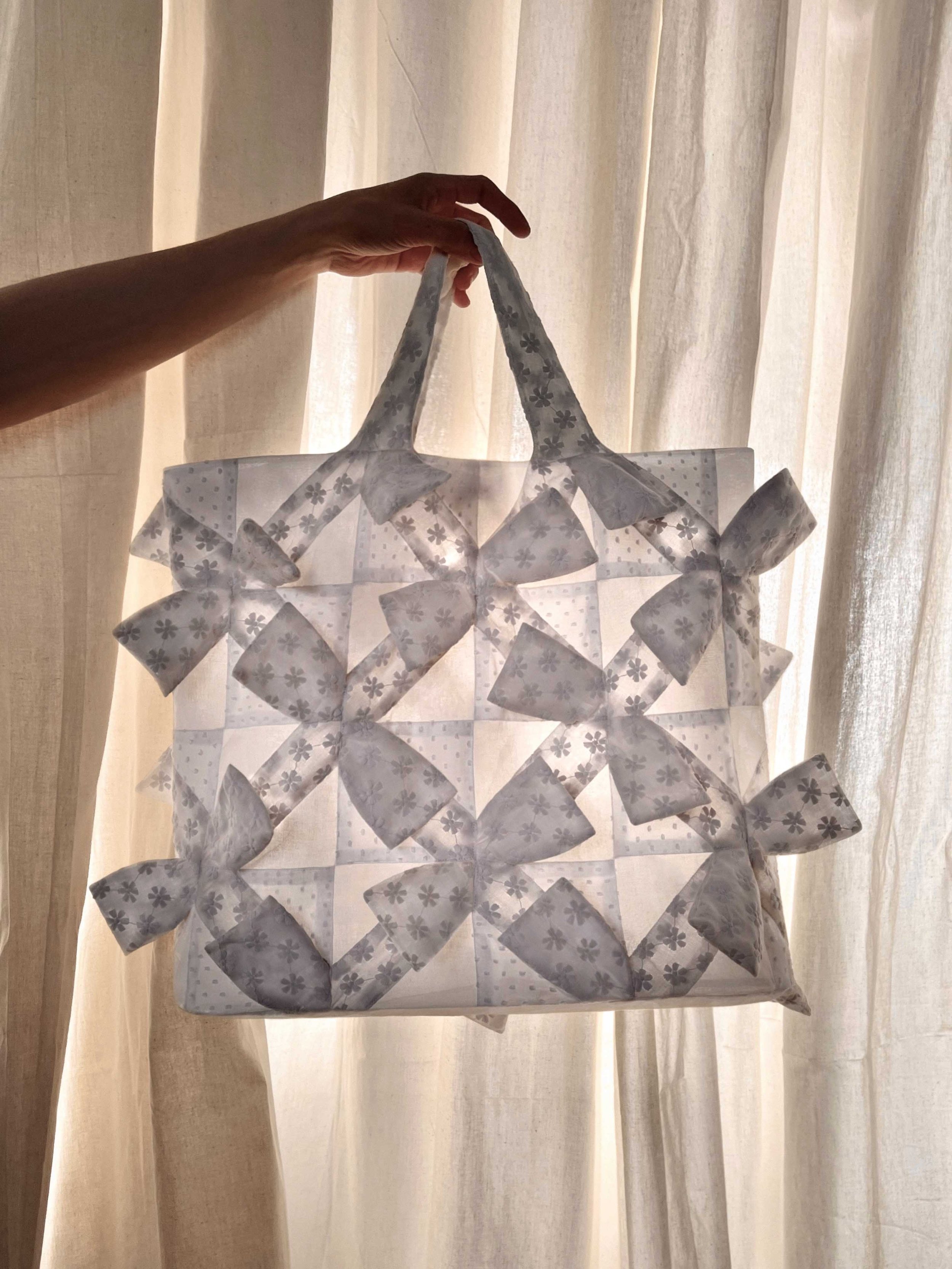

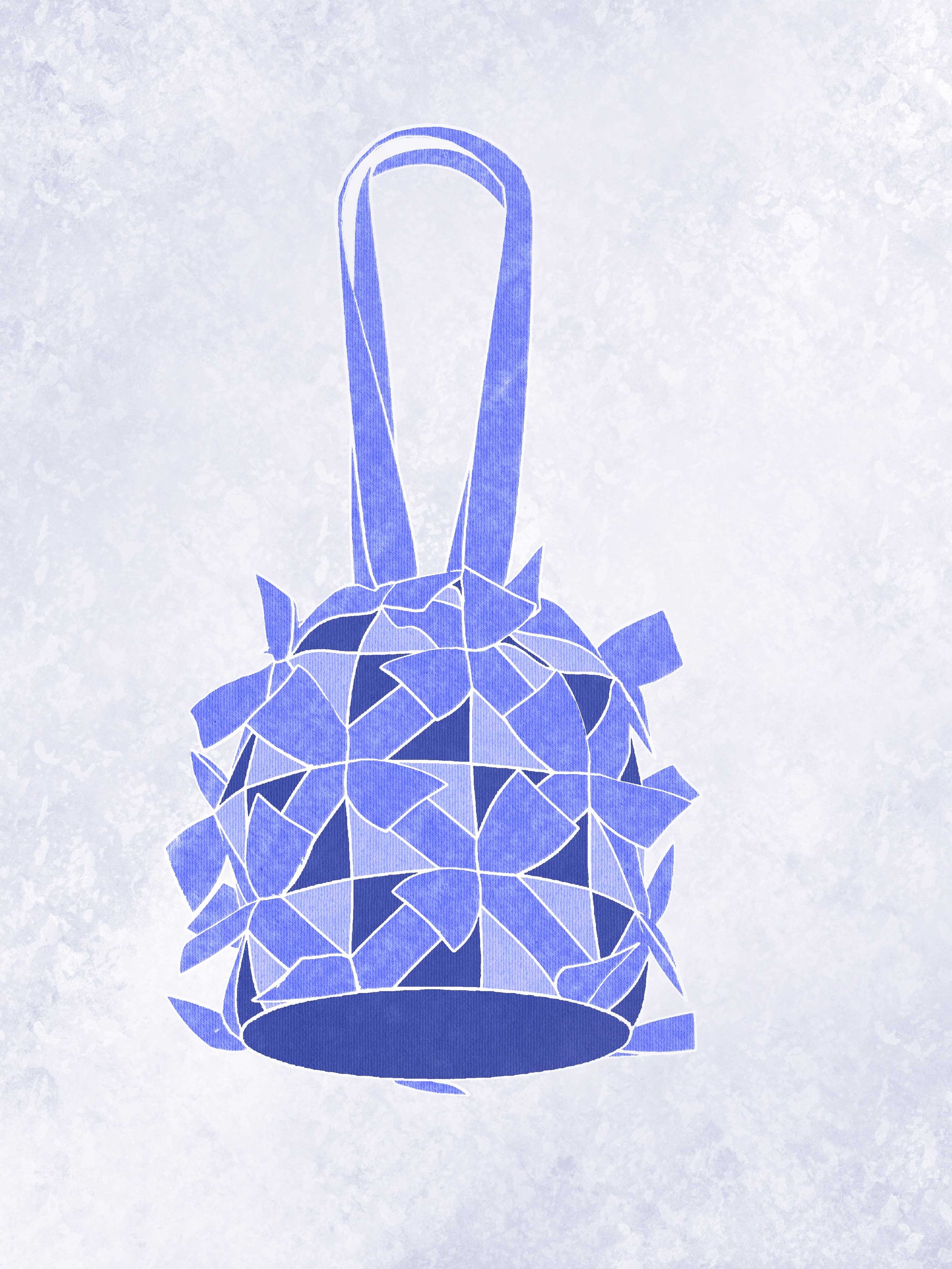
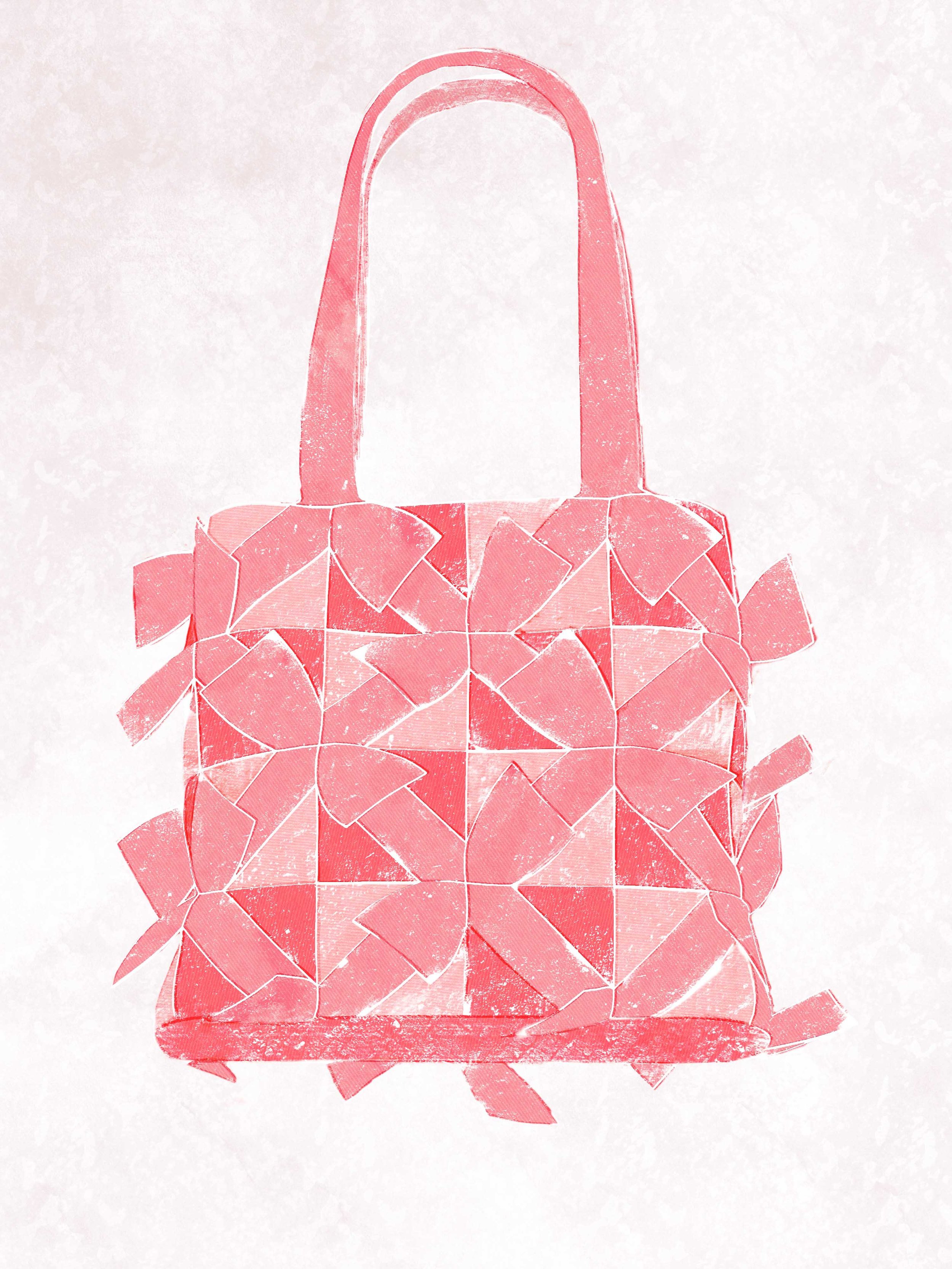

This project includes pattern pieces and instructions to make 2 different versions of the Bag - a Shopper Version with an elongated Base shape, and a Round Version with a circular Base shape. The Round version also includes a drawstring channel and drawstring. There are also options to have Long Straps (to wear the bag over the shoulder) or Short Straps, which can be used on both variations, it is up to you which to choose.
The ‘CERA’ 3D patchwork bag is suitable for the confident beginner / intermediate sewist level and beyond
Price - £ 24.00
-
The Shopper bag measures
H: 40cm L: 41.5cm D: 12cm
The Round bag measures
H: 40cm L: 31cm D:31cm
Strap Lengths:
Short option: 34cm
Long option: 86cm
Size of internal pocket: H: 24cm W: 26cm
-
The basic principle for the construction of the bag is to construct the 40 individual 3D Square Patches. Each square contains half of a ‘Bow’ which has been cleverly pattern cut to create a 3D Bow when combined with surrounding squares. The squares are then assembled in a specific repeating order, and constructed into a rectangular Patchwork Panel. The repeating 3D Bow shapes and connecting lattice ‘ribbons’ in the patchwork textile design appear as the rows are added together, and patches in the 3 fabrics are correctly aligned.
You will need to construct straps, a lining and (optional) internal pocket (full instructions are included for all steps).
This pattern has been specifically developed to make use of smaller remnants and offcuts of fabric which you might have left over from other sewing projects, or possibly from other unused textiles or clothing.
The possible combinations of colours and fabrics you can use in this project are infinite, making this an incredibly creative and exciting design. It also enables the maker to learn a new and unique ROBERTS | WOOD designed technique for building this 3D patchwork that we have developed in the design studio.
-
The patchwork design will work best with light to medium-weight fabrics with a bit of stiffness / structure, as this will help the 3D bows to stand upright. Fabrics such as slightly stiffer lightweight cottons or linens work well. It is possible to use a slightly heavier-weight fabric, so long as this is only one out of the three fabrics - this is to stop the seams becoming too bulky. (e.g. if all three fabrics you select are thick and heavy, the seams will become bulky and difficult to sew)
Tip: Cutting and making up a small sample section of the bag (2 x 2 square units) is a great way to help you visualise what your fabric combination will look like, and test your fabric structure before embarking on cutting the full project - this is highly recommended!
For the Lining Pieces you could use a lining fabric, or light to medium weight cotton. However, if you are trying to achieve a more stuctured bag, you may want to choose a stiffer lining such as a cotton canvas. In the instructions, we outline several suggestions that will help you create a more structured bag if that’s what you are trying to achieve, including adding fusible interlining or wadding to your project.
-
This pattern is intended to be cut from remnants from your other projects however if you are sourcing fabric to use, you can refer to the below for the fabric usage :
Fabric 1 - requires 45 cm of a fabric measuring 140cm wide
Fabric 2 - requires 30 cm of a fabric measuring 140cm wide
Fabric 3 - requires 115 cm of a fabric measuring 140cm wide
Lining - requires 45 cm of a fabric measuring 140cm wide
Please note, if your fabric is narrower than 140cm wide, you will require longer lengths of each fabric.
-
This ROBERTS | WOOD KiT project is provided as a PDF pattern with full sewing instructions. It includes an A4 printable PDF pattern, which can be printed and assembled at home using any standard home printer and an A0 pattern which you can have printed at a print shop. All our projects include detailed instructions, showing you step by step how to make the project.
This project includes pattern pieces and instructions to make 2 different versions of the Bag - a Shopper Version with an elongated Base shape, and a Round Version with a circular Base shape. The Round version also includes a drawstring channel and drawstring. There are also options to have Long Straps (to wear the bag over the shoulder) or Short Straps, which can be used on both variations, it is up to you which to choose.
-
Materials required:
3 different fabrics (see fabric usage for details of the amount required
Optional : wadding (if you want to quilt the patchwork); Fusible interfacing if you want to stiffen your fabrics
Equipment required: Paper scissors, sellotape (for assembling A4 pattern), Iron, fabric scissors, measuring tape, tailors chalk, safety pin, pins, sewing machine
-
Confident beginner to Intermediate sewist level and and beyond
This pattern is a great choice for anyone from confident beginner level and upwards. It assumes knowledge of basic sewing techniques and terminology, although most of the processes are very straightforward and easy to follow. It is a fun project for anyone who wants to learn new textile and sewing skills.
The project also provides detailed instructions, broken down for each step, so don’t worry if you don’t know where to start with assembling the design.
This is a perfect project to use up some fabric offcuts that might otherwise be going to waste.
This project is likely to take a few days to complete - whilst the basis of the construction is quite simple, assembling the repeated 3D patchwork will take time and should be seen as a labour of love, designed for those who adore the making process.
-